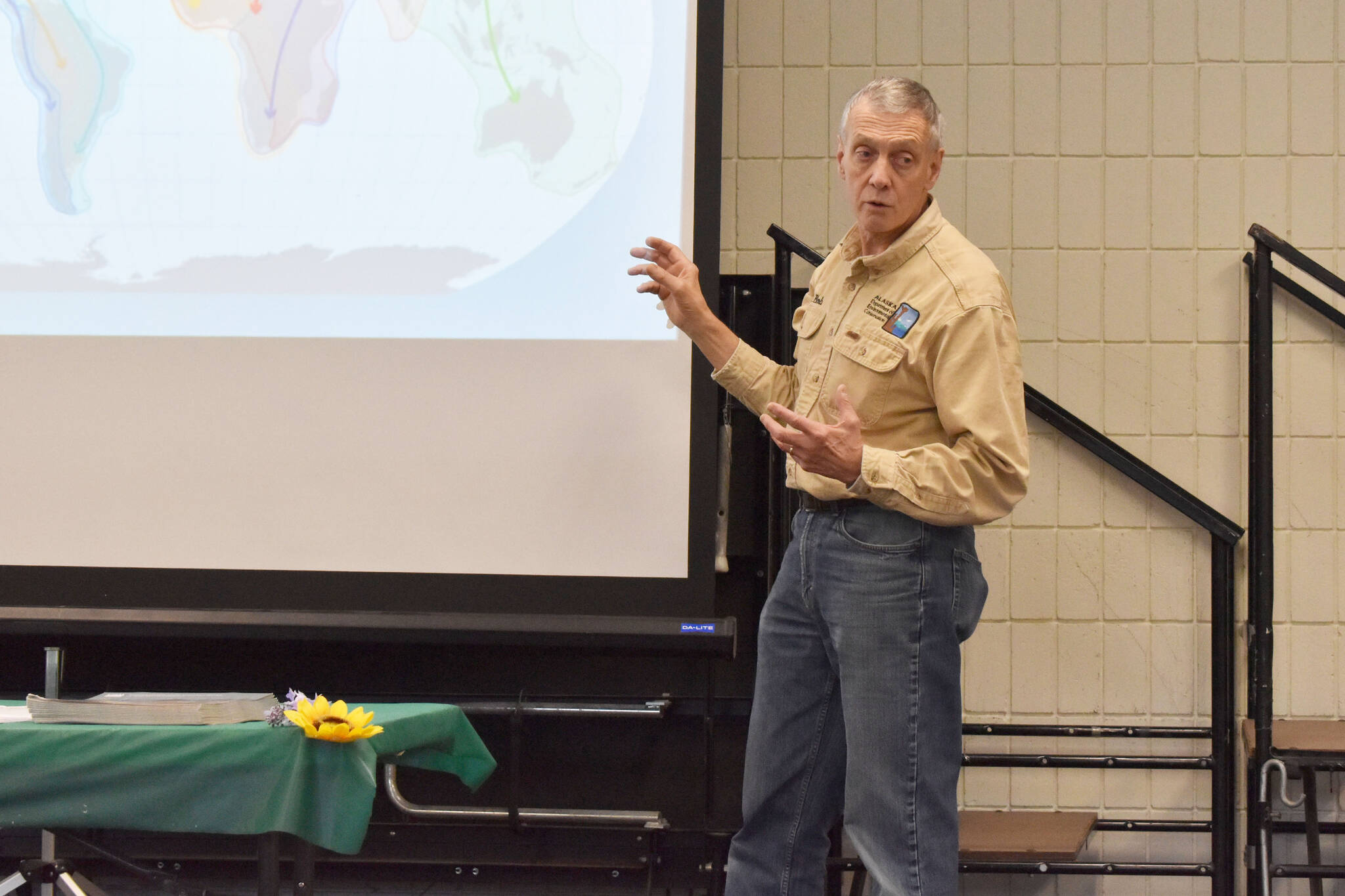Alaska State Veterinarian Bob Gerlach gave a presentation Monday in Palmer where he described the ongoing efforts of his office to mitigate the spread of avian influenza in Alaska as they expect migratory birds to bring the disease back to the state.
A press release from the University of Alaska Fairbanks, which hosted the event at their Matanuska Experiment Farm and Extension Center, says that the 2022 outbreak of avian influenza killed millions of birds and entirely wiped out some commercial flocks.
“While its impact on Alaska was less severe, avian influenza is still present in Alaska,” the release reads.
During his update, Gerlach said that influenza numbers dropped in the winter as birds migrated south. He said the impact on bird populations in South America has been “devastating.”
“About four weeks ago, we saw the migration of those birds coming back up from South to Central America into the United States,” he said. “We may start to get detections and outbreaks again in domestic poultry.”
Though with warming temperatures the risk for a new outbreak of the virus is much higher, Gerlach said that there is a considerable decline in outbreaks nationwide compared to this same time last year.
The variant of avian influenza being tracked in the United States is EA H5N1. Gerlach said it’s described as “highly pathogenic” because it has the ability to kill poultry — representing a threat to food security and economics.
The last detected incidences of the strain in Alaska were in March, in three bald eagles across Wrangell and Sitka. The last instance in the Kenai Peninsula Borough was in December, also in a bald eagle. To date, there have been eight infected birds identified on the peninsula, the first being detected in May of last year.
Gerlach said that the recent outbreaks have also begun to stretch beyond birds, “one of the first times,” an avian influenza has made the jump.
Detection of the influenza in mammals has mostly been around Michigan and the northeast, but also in Canada and in Alaska.
In Alaska, a red fox, a brown bear and a black bear have been found infected. Gerlach said the brown bear was found dead and the black bear was found with severe neurological damage. They thought the fox just had rabies, which it did, but tests showed that it was avian influenza that killed it.
Gerlach said his office has two employees, including himself. Their response to the spread of the virus focuses on surveillance. He said they’re doing lots of testing — and distributing test kits to bird rehabilitation centers and biologists. They’re also doing outreach to agricultural groups, farmers and subsistence communities about engaging in biosecurity to protect their flocks.
Gerlach said the biggest question he’s hearing is “are these birds safe to eat?”
He called the risk “extremely minimal,” and said that people probably wouldn’t eat a bird that looks sick or acts strange.
The biggest risk in Alaska, Gerlach said, is to poultry. The concern is for economic and food security impacts of a widespread virus.
To prevent that spread, Gerlach said his office is asking the public to report sightings of dead or oddly behaving birds to the Sick and Dead Bird Hotline, at 866-527-3358.
“All you’re doing is lowering your risk as much as you can.”
For more information about avian influenza, visit dec.alaska.gov/eh/vet/.
Reach reporter Jake Dye at jacob.dye@peninsulaclarion.com.

